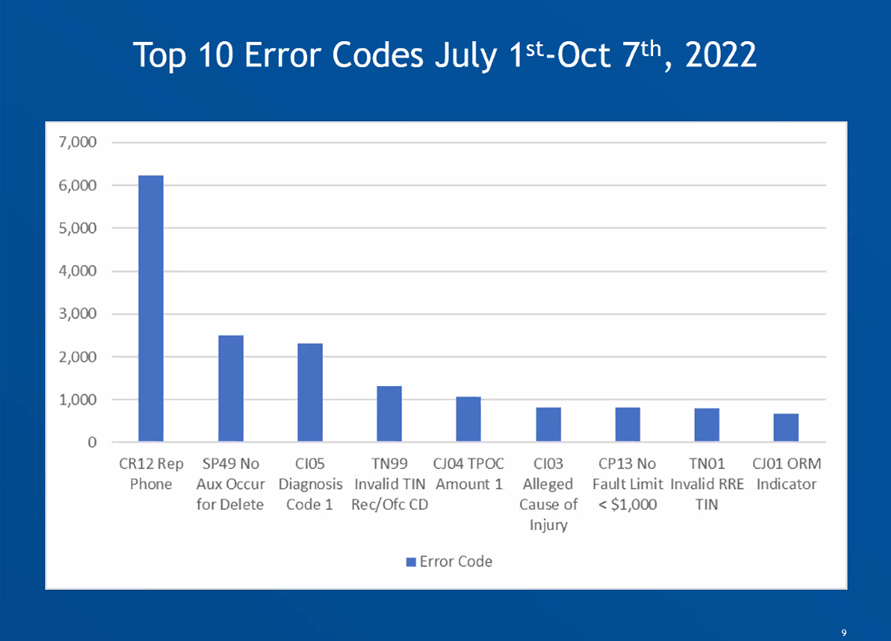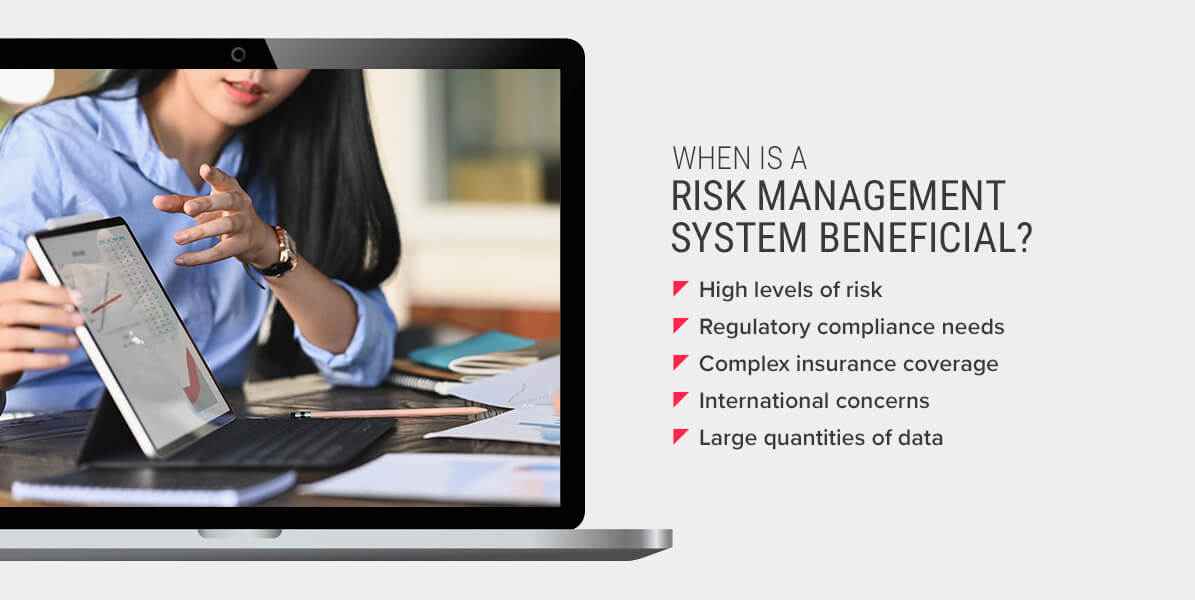Claims management is one of the essential parts of the insurance process. It is a critical part of financial planning and dictates how insurance providers handle customer service. The claims management process involves multiple parties and steps, and obstructions at any of these points can significantly affect the result.
Blog and News Content
Managing insurance claims is a complex and elaborate process. The claims management process is challenging, and manual processes are laborious and time-consuming. Experts project the global claims management market in health care alone to reach $136.67 billion by 2030. More claims management professionals use technology to improve efficiency, minimize loss and manage the complete claims life cycle.
Outside of digitalization, many in-house methods and tips for claim management can help insurance organizations elevate their processes and provide higher customer satisfaction. As expectations change, claims management must be faster and more comprehensive.
What Is Claims Management?
Claims management identifies, authorizes and resolves insurance claim demands to recover losses. Claims management professionals are responsible for processing claims and handling clients during stressful and vulnerable times.
Traditional claims management involves filling in forms and manual investigations, which can cause delays in authorization and challenges in managing risk. Digitization has brought new processes to claims management, providing transparent, streamlined options from a user-friendly interface. Still, effective claims management relies on systematic processes to provide a satisfactory customer experience.
Claims Handling Tips
The delays are among the most significant challenges in the claims management process. Therefore, effective claims management requires streamlining. Quickly resolving claims is the primary goal for insurance staff and claimants.
Here are some tips for claims management effectiveness.
Enhance Your Team’s Performance
The claims management process requires a team to work together to improve efficiency. Consider how your team members — specifically, your adjusters — perform their roles. What are the benchmarks within your organization? For example, consider how familiar your team is with your policies and protocols.
Take an honest look at where your team is now, so you can set new goals and begin to optimize. Ensure you provide your adjusters with comprehensive training and place them in roles that match their unique strengths. Pay attention to what your staff needs to streamline their processes. Claims management software designed for the adjuster frees them from mundane and repetitive work, providing more employee satisfaction and engagement.
Use Your Data and Technology to Your Advantage
As your team processes claims, they will gather essential data. You should gain actionable insights from those details to streamline your claims process, identify unusual claims and provide you with the information you need for effective decision-making.
Integrating the appropriate software can make your claims management processes considerably more effective. Consider claims management software that offers an incident-based approach to data collection. It provides a bird’s-eye view of your organizational processes, claimant trends and metrics that can guide your team and department to further effectiveness.
Prioritize Your Management
The claims management process has many moving parts — adjuster notes, police reports and customer demands. Several people must review all the information before awarding the claim. Additionally, without the ability to coordinate tasks and reminders across team members, you will risk missing critical deadlines and damaging your firm’s reputation.
A comprehensive claims management system will help your team track where a claim is in the overall process, what actions to take and who is responsible for them. Your team will also have all the necessary information to complete their assigned tasks. This data will help your department stay on track to its efficiency goals.
Take Your Time With Each Claim
Ensure your customer service remains a priority in the face of pressure. Lack of attention could lead to your team overlooking critical details. Assign claims to the most suitable adjusters based on the claim’s complexity and the adjuster’s experience level and provide ongoing coaching and mentoring to team members.
Providing your team with mentorship and open communication channels can help foster collaboration within your team and empower them to make meaningful contributions to the department.
Comply With Relevant Regulations
The claims management industry is subject to many regulations. Every step in the process requires complete adherence to avoid invalidations. Your methods must align with the relevant regulations, and manually intensive processes increase the risk of accidental non-compliance.
Just as your methods must comply with regulations, they must be completely transparent to your customers. Showing you follow the rules fosters trust in your procedures.
Invest in the Best Technology
Customer needs have changed recently, and they expect expedient responses to claims. An application where customers can access your claims management services from their mobile devices is essential to maintain a competitive position in the industry.
Claim adjusters can also benefit from a mobile application. It allows them to access real-time data, regardless of their physical location, to settle claims quickly and efficiently.
The Benefits of Claims Management Software
Effective claims management requires you to streamline and digitize your processes. This process eliminates manual inputs and investigations, which are time-intensive and prone to human error. Claims management and compliance reporting software solutions have many benefits.
- Reducing costs: Streamlining your workflow, maximizing efficiency with an adjuster-centric interface and providing customers faster resolution times will reduce your costs in the long run.
- Improving customer service: With the ability to provide real-time insights into a claim’s status and provide a self-service function, your customers can look forward to faster resolutions and comprehensive service.
- Streamlining processing efficiency: Automation can reduce unnecessary processes and increase efficiency. Automating notifications and document requests helps your team stay on track with claims and reduce their time on each one without sacrificing precision.
- Standardizing processes: Claims management often involves multiple parties. Introducing standard processes and integrating your software with other data sources eliminates discrepancies as information passes to different parties throughout the claim.
- Improving security: Claims management software complies with personal information protection laws, so you can assure your customers that you have protected their data from cybersecurity threats.
Streamline Your Claims Management Processes With APP Tech
The claims management process is a time-consuming and labor-intensive task. As a claims management professional, ensuring your company’s operations are efficient and effective to reduce the claim life cycle and resolve disputes is vital. APP Tech’s Cloud Claims solution can help streamline your claims management process by tracking claims activity and centralizing all your documentation in one location.
Our claims management solution boasts an incident-based architecture, providing stakeholders with real-time insights so they can correct, mitigate or prevent risky claims. For self-insured organizations, third-party administrators, mid-size carriers, or even firms looking to reduce your overall exposure to risk, integrating APP Tech’s Cloud Claims offering into your current strategy ensures your processes comply with claims management best practices.
If you want to learn more about our innovative claims management software solution, please contact us today. One of our solution consultants will be in touch to answer any questions and schedule a demonstration.
Every industry has inherent risks, and proactive management is crucial for avoiding the consequences. Those consequences often involve monetary loss, but unmanaged risks can also hurt your organization in areas like agility, efficiency and reputation. Manual risk management usually involves outdated systems like spreadsheets and email attachments, but a risk management platform can streamline the process, and enable you to mitigate risk.
With the ability to capture incident data, identify root-cause, take corrective action and track progress, a digital system can help you revolutionize your approach to risk management and reap the many benefits that come with it.
What Is a Risk Management Information System?
A risk management information system, or RMIS (pronounced “RIM-iss”), organizes and stores a wide range of risk management data — such as claims records, property values and loss control measures — and turns it into actionable resources. A RMIS allows decision-makers to act on all available data and access relevant insights. It can also serve as an incident reporting tool and may have industry-specific features.
Some functions you might find in a RMIS include:
- Cloud-based access for field reporting from any device, in any location.
- Dashboards to visualize risk factors.
- Reporting features, such as loss run generation.
- Business rule modules to automate common actions and workflows.
- Claims and policy management.
- Property and asset management.
- Activity logs to track adjuster notes and actions.
- Notification of open action items, such as court dates, appointments and filing deadlines.
- Medicare Section 111 compliance.
- Financial tracking for reserves, payments, and collections.
The RMIS provides a centralized space for these resources, so users can access the information they need from one convenient program. Centralizing your data can provide more security, too, since users can store information directly in a protected system instead of fragmenting it across different devices and platforms.
What Are Risk Management Information Systems Used For?
Many different businesses use RMISs to avoid and keep track of incidents, claims and risks. Some circumstances that typically call for a dedicated RMIS include:
- High levels of risk: Industries like construction, manufacturing, utility and transportation naturally involve considerable risk with issues like potential injuries and damage to assets. A RMIS helps organizations respond to incidents, avoid them and factor them into business decisions to facilitate prevention.
- Regulatory compliance needs: Risks can also come in the form of violated regulations, so businesses like healthcare and food and beverage companies often use a RMIS to oversee them. They might use it to watch for potential violations and assess their impacts.
- Complex insurance coverage: Some businesses have complex, layered insurance policies and work with multiple carriers. A RMIS can help users navigate the demands and risks associated with each one.
- International concerns: Operating across borders can come with challenging policies and multiple languages and currencies. With a RMIS, businesses can more easily accommodate the risks associated with international operations.
- Large quantities of data: Large businesses or those with a large number of assets benefit from the visibility a RMIS offers. It can keep data in one place and let users access everything in an organized way, avoiding errors or time-consuming navigation demands.
The Benefits of a RMIS
While a RMIS offers the foundation for necessary tasks, a dedicated platform also helps businesses improve their risk management approach overall. A RMIS can offer benefits such as:
1. Fewer Errors and Auditability
When you use scattered apps and manual processes, errors become inevitable. A typo here or an outdated document there can result in costly ramifications for an organization dealing with claims. It could also lead to significant time spent fixing problems, such as chasing down files or repairing a damaged reputation. With robust tools for organization and automated reporting, a RMIS is a powerful resource for reducing human error.
A RMIS can help mitigate human error through detailed audit logs, as well. In highly regulated industries, for instance, these logs might be required, and the RMIS creates them automatically.
2. Business Agility
Modern businesses must be able to pivot their strategies in response to evolving demands. From normal fluctuations to adopting new technologies, agile capabilities let organizations respond to threats and make changes without excessive risk.
Agility is often a primary factor in company growth, and a RMIS supports agile initiatives by providing a clear picture of the company’s risk and a flexible, scalable platform.
3. Centralized Data
The old-fashioned approach typically involves stashing data away in various places, like individual laptops, hard drives and different apps. Files can get lost or destroyed, and users might have to spend precious time collecting information from other people. With a RMIS, your data stays in one place, ideally accessible through the cloud.
All users involved in the claims process can access the information they need from anywhere and on any device. An employee can manage claims from their phone in the field or on a desktop computer in the office. Data centralization also enables robust and customizable dashboards and reports for fast insights into the most important areas of risk management.
Overall, a centralized approach can help improve data quality, collaboration and speed.
4. Efficiency
Unsurprisingly, all that ease of use and flexibility can help employees work much faster. They can eliminate the tedious work associated with manual processes and focus more on the tasks that demand their attention and skill.
Some of the features employees might use to save time with a RMIS include:
- Automated reporting
- Workflows and event triggers
- Streamlined user interface
- Email/document templates
- Reminders
- Search tools
- At-a-glance dashboards
5. Cost Savings
With all of these benefits comes cost savings related to many different processes. For instance, greater efficiency can help save on labor costs and reduce employee frustration, while reduced errors can protect against violations or expensive fixes. Business agility can impact the trajectory of a company and allow for new possibilities that would not be possible if it was too difficult to make changes.
Get More From Your Risk Management With Cloud Claims
Now that you have seen RMIS explained, you can find the right tool for your business and approach risk management in a more effective way. Whether your main priority is speed, accuracy or something else, Cloud Claims can help. This cloud-based RMIS from APP Tech offers a host of features for reducing risk and working more efficiently, including:
- Rich and flexible reporting
- Thorough incident data capture
- Automated notifications
- Reminders and activity logs
- Tag-based organization
- A customizable dashboard
- Global Search
- Claim financials
Cloud Claims is an incident-based platform that is easy to deploy, scalable and tailored to the unique needs of your business. Our clients span diverse industries like transportation, insurance, third-party administration and construction. We push updates automatically and maintain top-tier security standards for all of our products.
Reach out today, and see for yourself why so many companies trust Cloud Claims and APP Tech for their risk management software.
If you make payments to Medicare beneficiaries, you are required to report them under Section 111 of the Medicare, Medicaid and SCHIP Extension Act of 2007 (MMSEA). MMSEA supports transparency between payers and Medicare to improve benefits administration, but reporting can be tricky business. You need to set up the right software, identify the right people and follow the right timelines.
To help you avoid violations and simplify MMSEA reporting, we put together this MMSEA Section 111 user guide.
What Is MMSEA Section 111?
MMSEA Section 111 created mandatory reporting requirements for organizations that make certain payments to Medicare beneficiaries with group health plans (GHP) or non-group health plans (NGHP), including liability insurance, no-fault insurance and workers’ compensation. A party subject to Section 111 requirements is called a responsible reporting entity (RRE). These include GHP and NGHP organizations that function as an insurer or self-insurer. RREs may also include plan administrators or fiduciaries for self-insured or self-administered plans. In some situations, third-party administrators (TPAs) or other agents are delegated by RREs to manage the Section 111 reporting process, but the ultimate responsibility for Section 111 reporting remains with the RRE itself.
A quick background of Medicare can help us explain MMSEA Section 111 further. Medicare was introduced back in 1965 as a primary source of payment and amended in 1980 to be a secondary source. With this update, called the Medicare Secondary Payer Statute (MSP), workers’ compensation and primary insurers became the primary payers. The statute limited Medicare’s responsibility for these benefits, but it requires significant data transparency to enforce. The MMSEA reporting requirements aim to support enforcement through amendments to MSP.
One notable, recent update to MMSEA comes from the Provide Accurate Information Directly (PAID) Act, which Congress passed in late 2020. It helped NGHP RREs better identify Medicare beneficiaries with improved data from the Centers for Medicare and Medicaid Services (CMS). It offers more details about enrollment, including participation in Medicare Advantage (Part C) or a Prescription Drug (Part D) plan, to ease reporting demands for RREs.
CMS introduced MMSEA Section 111 to help identify primary payers and support more accurate benefits payments. In other words, it helps CMS avoid paying for benefits that should be covered by primary insurance providers. It also authorizes CMS and RREs to exchange health insurance information electronically. While Section 111 reporting supports a necessary part of Medicare administration, it also adds some challenges for RREs, who must dedicate time and energy to accurate, timely reporting.
Penalties of Non-Compliance With Section 111 of MMSEA
Non-compliance with CMS MMSEA Section 111 can come with steep fines, including civil money penalties (CMPs) of up to $1,000 per claim per day. The statutory maximum penalty is up to $365,000 per beneficiary per year. CMS proposed limiting these penalties in February 2020 with a 3-year standardization time limit, but the final ruling timeline has been extended to Feb. 18, 2024. After the ruling is published, CMS can levy penalties, so RREs must ensure a dependable reporting process ahead of this deadline.
Who Has to Report Under MMSEA Section 111?
MMSEA Section 111 Reporting Requirements
RREs can be insurers or self-insurers. For self-insured or self-administered plans, the RRE is the entity which funds payment on the plan’s claims. While RREs can use agents or TPAs to help with reporting, the RRE remains responsible for the accuracy and on-time submission of the reports.
Each quarter, RREs must submit electronic data on liability, no-fault and workers’ compensation claims for Medicare beneficiaries. CMS will then confirm the injured party’s Medicare status and confirm acceptance of the claims.
How Do I File a Section 111 MMSEA Report?
Filing an MMSEA report is technically challenging, and with such hefty fines, you will want to get it right. The reporting process for MMSEA Section 111 includes the following steps:
- Before you can submit anything, you will need to obtain an RRE identification number from CMS and establish a method of communicating with CMS’s platform, called an electronic data interchange (EDI). EDI provides a secure data exchange and standardized formatting, but it requires a specific type of platform that can be difficult for organizations to set up independently.
- You will also need to determine which people are Medicare beneficiaries according to CMS’s criteria. Age is insufficient on its own, so finding beneficiaries might be challenging. You need to submit key information about each claimant, such as social security numbers, names and dates of birth, to Medicare’s query tool to look for a match and get a corresponding Medicare ID to use with your claims.
- After identifying the Medicare beneficiaries within your claims, you must submit detailed reports quarterly, during a CMS-assigned submission window, and process responses from CMS to identify errors. Errors could render your claim unreported and affect compliance. Integrating your current claims system with the EDI process can be very helpful to give you visibility into the process, catch errors, and avoid data re-entry.
Throughout the process, you must stay up-to-date on any changing CMS requirements and protocols, such as the PAID Act, and maintain a thorough audit trail. This audit trail should reveal any interaction that someone has had with the claim and will be needed if CMS decides to investigate your organization.
What About the Direct Data Entry (DDE) Option?
Alternatively, you can use the Direct Data Entry (DDE) claim submission method offered by CMS. However, this option is open to RREs that plan to submit less than 500 claims per year and it should also be noted that each add, update and delete transaction counts toward this annual limit. DDE submitters are bound to all of the NGHP User Guide requirements. The DDE option is not intended for RREs with significant claim volume since only one claim report can be submitted at a time but is a useful, no-cost option if an RRE has only a handful of claims to report each year.
MMSEA Section 111 Reporting Software
Since many components are involved in MMSEA reporting, NGHP RREs often use a dedicated program to handle Section 111 reporting requirements. A software platform can greatly improve your ability to submit reports accurately and on time. It streamlines the process and helps you avoid the human error of manual processes. Some tasks that an MMSEA reporting platform can offer include:
- Identifying Medicare beneficiaries
- Validating submissions for errors prior to submission, avoiding rejections
- Keeping an audit trail
- Providing detailed reporting
- Integrating with claims software to avoid manual data re-entry
- Handling all the complexities of EDI
Despite the complex nature of mandatory insurer reporting (MIR), a software system should be user-friendly. Employees can spend less time navigating Section 111 requirements or creating opportunities for errors. Cloud-based MMSEA Section 111 reporting programs are particularly valuable, allowing you to access data from any device and location. They also let the provider update the system as needed, such as when CMS changes its requirements.
Streamline Your Section 111 Reporting With MIR Express™️
Government reporting does not leave room for error, so look for a platform you can depend on. MIR Express™️ is built for NGHP Medicare reporting and packed with features for reliable, efficient compliance. We have an acceptance rate of over 99.96% over millions of submitted claims, and we offer guaranteed on-time reporting during an RRE’s assigned reporting periods. With automated monthly and quarterly submissions, MIR Express™️ helps you streamline MMSEA Section 111 reporting and breathe easy.
The platform comes at a flat rate and is completely unbundled: you will not need to pay for additional managed services or contracts. MIR Express™️ is fully integrated with Cloud Claims, to deliver a complete end-to-end claims and Section 111 compliance solution! Let MIR Express take the stress and complexity out of Section 111 reporting requirements. Learn more about MIR Express or reach out to us today!
On December 6, 2022, CMS hosted an online webinar addressing NGHP Section 111 reporting issues. The first half of the webinar covered concerns and points of interest from CMS’s point of view and the second half was a Q&A session fielding attendee concerns.
We heard a varied list of CMS’s concerns with the quality (and capability) of reporting that they are seeing. Angel Pagan, EDI Director at BCRC, pointed out that many of the points and procedures he was explaining in the webinar are outlined in the NGHP User Guide. Nevertheless, industry confusion prompted CMS to cover these topics in a webinar.
Some Takeaways, Reminders, and Points of Interest
- Indemnity-only settlements that do not release medicals do not need to be reported under Section 111 as TPOCs (total payment obligation to the claimant).
- Property damage amounts should be included in the TPOC amount if those amounts are part of a single settlement that has the effect of releasing medicals.
- The Event Table in Section 6.6.4 of Chapter IV of the NGHP User Guide has details on many common TPOC scenarios and is a good reference for RREs.
- Situations where ORM terminates for one injury but continues for another were covered. To properly report these situations:
- If there is no settlement, the ICD codes must be updated to reflect the continuing injury only, leaving ORM open until it terminates.
- If there is a settlement (TPOC) for one injury that terminates ORM, then the original report is updated with the ICD codes for the continuing injury and the ICD codes for the settlement are moved to a new claim record with the TPOC amount.
- Section 6.3 in Chapter III of the NGHP User Guide is a helpful guide to ORM reporting.
CMS Errors
One interesting segment was a view of the top ten error codes (though, humorously, the chart only showed nine) CMS has seen over the past quarter.

Another notable pair was the prevalence of CI05 and CI03 on the list. Their presence highlights that it is still common for CMS to receive invalid ICD-9 or ICD-10 codes on their submissions. CMS publishes a list of the acceptable ICD codes, which enables RREs to verify the codes they are submitting are acceptable. Section 111 vendors (like APP Tech) include validation checks to verify the correctness of ICD codes before claims are sent to CMS.
Additional slides in the presentation were dedicated to explaining technical bits about how ICD codes should be reported. It’s surprising that many claims are still reported with invalid ICD codes, given the prevalence of technology to assist with accurate reporting.
TPA Transfers
Two scenarios for moving claims from one TPA to another were reviewed. Although discussing a routine happening, the second scenario may have been confusing for some in the audience new to Section 111. This slide implied the Policy Number always changes when TPAs change and therefore it was necessary to send DELETE-ADD transactions to CMS for all claims when a new TPA takes over claims from another. It wasn’t quite clear from the slide that this only applies if one of the Section 111 “key fields” is changing (e.g. policy number). Mr. Pagan elaborated on this point during the Q&A segment, but we hope they clarify the slide before releasing the final deck on CMS’s website.
Upcoming Changes to the CP13 No-Fault Error Code
CMS flags a CP13 soft error for claims where the submitted No-Fault Limit is under $1,000. This is to help RREs identify incorrectly submitted no-fault claim limits. However, there are many policies (they noted motorcycle policies as an example) where the limits are less than $1,000 and this is causing many false positives. Therefore, effective January 2023, the threshold for triggering the CP13 error code is dropping to $500. This should be a relief for RREs that are currently reviewing many of these errors.
Here to Help
APP Tech is a leading provider of NGHP Section 111 Reporting Services via its MIR Express™ reporting platform. If you have questions about the CMS webinar or anything related to MMSEA Section 111, let us know. We’re here to help!
Update 12/15/2022: CMS posted the slides for the webinar on their website. You can access the complete slide deck with talking points here.
For its most recent edition, Claims ‘R’ Us magazine surveyed 3,467 risk managers across a number of industries. There were only two questions asked in the survey. Here are the questions, followed by the top ten answers to each of them:
Question 1: Does your claims software integrate with other data sources across your enterprise to centralize claims data?
- No.
- What?
- I don’t know.
- I’m new around here.
- Oops. My phone’s ringing.
- I’m sorry. I’m on break right now.
- Can I get back to you?
- My boss is on vacation.
- I just work here.
- Could you repeat the question?
Question 2: Does your claims software allow you to analyze incidents and claims by type and location to determine trends and better manage risk?
- No.
- What?
- I don’t know.
- I’m new around here.
- Oops. My phone’s ringing.
- I’m sorry. I’m on break right now.
- Can I get back to you?
- My boss is on vacation.
- I just work here.
- Could you repeat the question?
Our Analysis
We can’t say we’re terribly surprised by those survey results. Organizations typically operate in silos, even by default. The larger the organization, the greater the number of silos. The idea of software that can act as a hub or a platform for centralizing and aggregating data doesn’t occur to many people because they’re never compelled to think outside of or beyond their silos. I do my job. You do yours. We go home at the end of the day. We come back tomorrow and do it again.
But we think there’s a better way.
We think those silos can be nullified to a significant extent with claims software that serves as a hub for all of your claims information. The advantages are short-term and long. Most immediately, you’ll be able to overcome operational challenges with silo-busting management and workflow capabilities that let you organize financials, documents, notes, and notifications. Over the long haul, you’ll be able to run reports, identify loss trends and patterns, manage risk, and integrate data across your entire organization to better control your losses.
You’ll be able to turn trial and error into smile and error, with fewer and fewer errors all the time. Learn more about our Cloud Claims solution.
In the first post in this series, we discussed potential claims that might be subrogated in various lines of business. This time around, we’ll take a more general view of subrogation and the importance of managing the intricacies of subrogated claims.
Recently, PropertyCasualty360 published an article entitled, “Why subrogation is more than a final box to check“, that noted the financial importance of subrogating claims efficiently and accurately:
In the current economic environment … insurers are looking for every dollar they can add to the bottom line. Carriers also know that customer experience has become paramount in policyholder retention. The carrier’s ability to successfully subrogate and provide a deductible reimbursement to their policyholders in a timely fashion is a key driver for a positive claims experience.
We’d venture to say maximizing profitability, optimizing customer experiences, and providing a positive claims experience is important in any environment. And if you accept the notion that insurance is the fulfillment of a promise, making your policyholders whole in the event of a loss is the promise.
What to Do?
Needless to say, every insurance company would like to acquire as many new customers — and write as many new policies — as it can. But according to CB Information Services, it costs insurance companies $500 to $800 to acquire each new customer. And according to Insurance Thought Leadership, it costs insurance companies seven to nine times more to attract a new customer that to retain an existing one.
So, if the old saying is true, “A bird in the hand is worth two in the bush,” wouldn’t it make more sense (along with dollars and cents) for insurers to improve their subrogation performance? This may seem counterintuitive, but a small increase in net subrogation revenue could be more profitable than issuing a new policy.
Maybe we should consider that to be food for thought, at least for now. But with competition for new policyholders on the increase, with claims costs an abiding source of concern for every insurance company, and with profitability being a key measure of sound operations, it might be worth looking for that extra buck a little closer to home.
In any event, as they say in Brooklyn, it couldn’t hoit.
Supermarkets are often hard to insure. There are at least three reasons for that: First, the number of coverages they need can be daunting. Second, the number of employees (workers compensation) and customers (general liability) that have to be covered can be even more daunting. Third and most important, the sheer number of claims they may incur and have to manage can be downright terrifying. If you think that sounds odd, consider just these four sources of claims:
- Slips and falls. Whether those slips and falls occur inside the store from spills and wet spots — or outside the store from ice, snow, and cracks or other defects in walking surfaces — the supermarket could have to manage claims for injuries to knees, ankles, hips, elbows, or skulls.
- Injuries to employees from loading, unloading, and other lifting tasks. Those kinds of tasks can lead to back strains, other muscle strains, tendon and ligament injuries, and more.
- Injuries to employees from cleaning and other equipment. Floor polishing machines and industrial vacuums can cause scrapes, lacerations, muscle strains, and other injuries.
- Spoilage from power outages or other reasons. Storms and aging power grids can cause power failures resulting in the loss of perishable inventory.
In any of those situations, the attendant claims have to be managed and adjudicated.
Claim Management Solution For Supermarkets
To manage all those (types of) claims, you can record, manage, and adjudicate each claim separately. If you do, you’ll learn what your loss costs are, but you won’t be able to connect many dots.
Alternatively, if you adopt a flexible platform that constitutes one source for all of your claims information and gives you a disciplined process and workflow, you’ll be able to:
- Track all your loss costs
- Identify the trends suggested by types of incidents, their locations, their causes, and their related claims
- Determine ways to anticipate and, therefore, to mitigate such incidents in the future
- Better manage your overall risks, regardless of their types or their corresponding incidents and claims
- Lower your overall loss costs and, thereby, lower your liability, property, and workers compensation insurance premiums.
We don’t want to tell you what to do. But if it were our supermarket, we know what we’d do. And remember: You can’t manage what you don’t track.
Oh … uh … you missed a spot on aisle five.
Learn more about APP Tech’s Cloud Claims solution.
You can tell you’re really deep in the claims weeds when you start thinking about subrogation. Since we are deep in the claims weeds, we have to think about it.
To put it simply, just in case you’re not deep in the claims weeds, subrogation refers to an insurance company’s seeking reimbursement for the costs of a claim from the party — or the insurance company of the party — responsible for damages that precipitated the claim. If responsibility is established and documented, subrogation can begin at any point in the process of settling a claim.
Here are some examples from a few different industries:
- Property/Casualty. A cement truck careens around a corner at 90 miles an hour, on two wheels, and t-bones the car you’re driving. By some miracle, you’re not injured. But your car has to be removed from the scene with a dust pan and a squeegee. The driver of the cement truck is determined to be at fault by virtue of the facts that (A) he was exceeding the posted speed limit by 60 miles an hour and (B) driving a cement mixer on two wheels is permissible only in movie stunts and monster-truck shows. The cement truck driver’s insurance should pay for the cost of finding and replacing your car. But that process is held up because the cement truck driver’s insurance company is also contending with the fact that the cement truck driver filed a workers comp claim, contending he had trouble controlling the vehicle because his vision was damaged from falling into the cement mixer. Under those circumstances, your insurance company would pay to find and replace your vehicle. Then it would seek reimbursement from the cement truck driver’s insurance company for the cost of your claim, including your deductible, the dustpan, and the squeegee.
- Construction. A plumber is tricked by an electrician into biting a live wire. The plumber suffers burns to his face and ends up with a terrible perm. While the perm will grow out, he files an injury claim with his company’s insurer for the burns to his face. The electrician is determined to be at fault for professional negligence and for playing a practical joke in an inappropriate setting. The plumber’s insurance company uses subrogation to seek reimbursement from the electrician’s insurance company for the plumber’s injury, for playing a practical joke in an inappropriate setting, and for shaving the plumber’s head since he opted not to let the perm grow out.
- Hospitality: The chef in a restaurant bets a waiter he can’t jump over a patron’s table without disturbing anything. The waiter takes him up on it. Since the waiter had pounded 12 shots of Jose Cuervo at the restaurant’s bar before his shift, he miscalculates his take off, fails to get the necessary speed and elevation, and plants his lead landing foot in the patron’s clam chowder. The patron suffers burns from the hot chowder and files a liability claim against the restaurant. He then goes to the emergency room (ER) to be treated for his burns. His ER visit is covered by his medical insurance. Since the waiter was determined to be at fault for improper execution and being over the legal blood-alcohol limit, the restaurant’s liability insurance is responsible for paying the patron’s liability claim and for comping him another bowl of chowder. And since the patron filed a liability claim against the restaurant, his medical insurer subrogates the cost of the ER visit to the restaurant’s insurer.
Cloud Claims Makes Claim Management Simple
Chances are your claims won’t be anywhere near as complicated — or absurd — as the ones above. Nevertheless, we built subrogation capabilities into Cloud Claims to make sure you’d be able to cut through the weeds and handle anything that comes your way.
You and your claimants will be happy we did.
`Curiouser and curiouser!’ cried Alice (she was so much surprised, that for the moment she quite forgot how to speak good English).
We thought of that line from Alice’s Adventures in Wonderland when we read a recent article in PropertyCasualty360. The article — “Mitigating risk & reducing employee claims for commercial clients” — said this, in part:
As employers continue to struggle with managing remote versus in-person employee working conditions around the United States, it is expected that employee practices liability insurance (EPLI) claims will continue to rise. In fact, data from the Equal Employment Opportunity Commission (EEOC) shows that EPLI claims have increased every year since 2003. EPLI claims include any employment-related claims such as wrongful termination, discrimination, workplace harassment and retaliation.
That citation appears to employ the logical fallacy of false cause. The assertion seems to be (A) managing remote versus in-person employee working conditions will (B) cause EPLI claims to rise. But if EPLI claims have increased every year since 2003, then A is not necessarily the cause of B.
One More Thing
The article also says this:
Some degree of risk is unavoidable for businesses, but ignoring that risk increases the volatility of outcomes and potential damage. Sixty-five percent of founders admit that risk is an inherent part of business and is necessary to grow.
The first sentence is simply and logically true. The second sentence is shocking in that only 65 percent of founders admit to the reality of risk. (And we wonder why tort lawyers are overburdened.)
Manage Claims With Cloud Claims
All of that musing about philosophy and logic notwithstanding, one thing remains universally true: Claims — EPLI and otherwise — have to be managed. And a SaaS platform that automates workflow and operationalizes risk mitigation by enabling users to identify — and thereby mitigate — claims and risk trends by type is a good place to start. After that, if you can find a SaaS platform that also also tracks salvage, recoveries, subrogation, various parties to incidents, claims by type, vehicles, road conditions, types of injuries, wage details, and more — with customizable tags and drop-downs — buy it.
Anything else would even make Alice wonder.

Subscribe To Our Email List.
Subscribe to access video classes, webinars and free events

Incident-based claims management software for self-insured companies, third-party administrators, and insurance providers.
Learn More
A Medicare, Medicaid, and SCHIP Extension Act of 2007 (MMSEA) Section 111 reporting compliance solution.
Learn More© 2025 - APP Tech. All Rights Reserved.
SUPPORT
Submit A Ticket
CONTACT
At Your Service
CONTACT
At Your Service
CONTACT
At Your Service
CONTACT



















